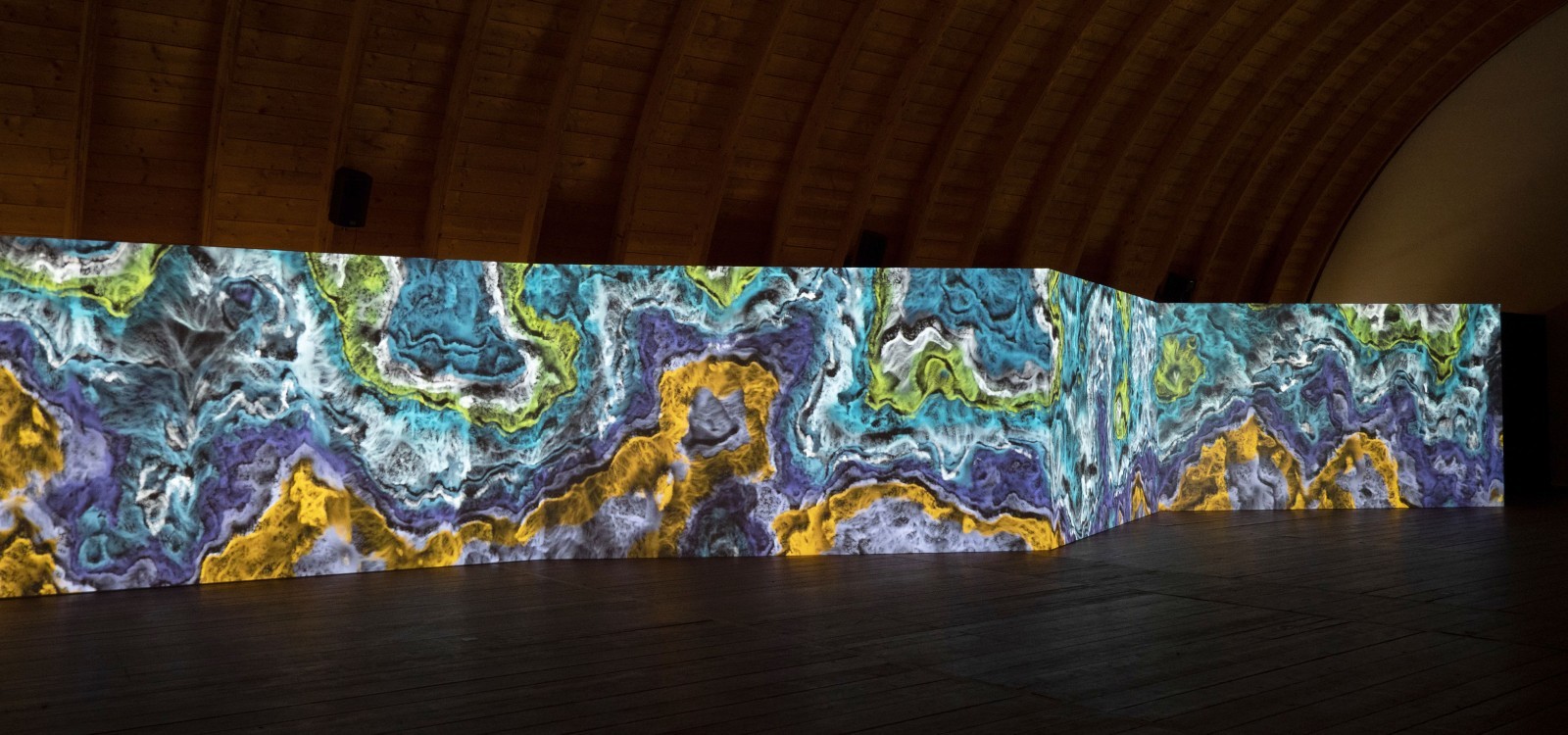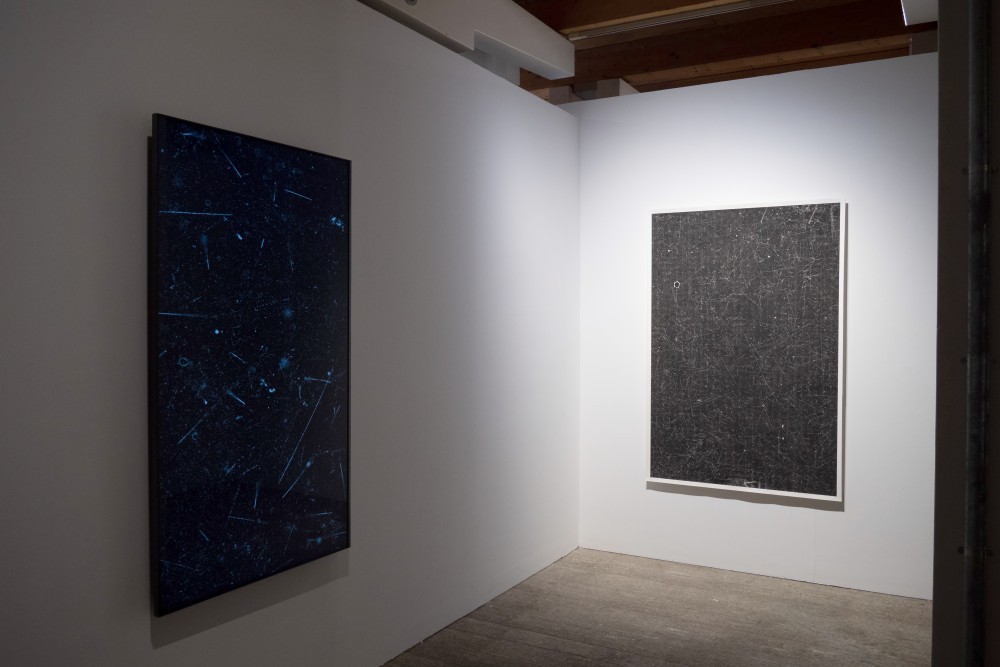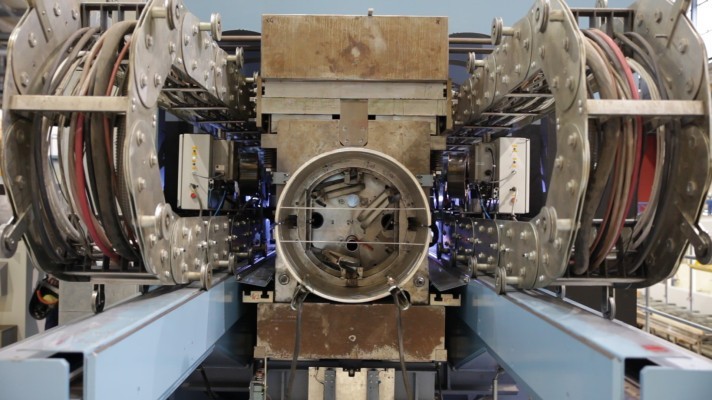
Semiconductor’s solo show in Bavaria features three works from their residency at CERN
The film The View From Nowhere, the space-time lapse Through the AEgIS, and the animations HALO 0.1, 0.2 & 0.3 are on view at the Schafhof – European Art Forum in Upper Bavaria
Over the past twenty years, Brighton-based artists Ruth Jarman and Joe Gerhardt have become renowned for their innovative work investigating the material nature of our world and how we experience it through the lens of science and technology. Blending experimental moving image techniques, scientific research and digital technologies, Semiconductor creates first-person experiences that disrupt our everyday assumptions about reality and encourage us to step outside our fixed points in space and time to experience places that are in a constant state of flux.
Semiconductor’s practice often evolves from intensive periods of research in scientific laboratories. In 2015, the artists won the Collide Award and completed a three-month residency at CERN, developing a multimedia body of work that emerged from their artistic research in the laboratory and their interactions with physicists, engineers and staff. Three of these works are now on show in their solo exhibition Spectral Constellations at the Schafhof – European Art Forum in Upper Bavaria.
The first of these works is the space-time-lapse Through the AEgIS, which explores how we make sense of nature through the language of science. Working in collaboration with experimental physicist Michael Doser, the artists used data captured by the AEgIS experiment, which researches how antimatter responds to gravity. The lapse shows pions, protons and nuclear fragments flying out from the annihilation sites when matter and antimatter interact. These particles ionise a photographic plate which, when developed, reveals their trajectories as different-sized tracks.
Using a special microscope with a very shallow depth of field, the photographic image is recaptured in several stages; first, by shifting the focal plane in 2-micron steps and then by scanning through each layer in thousands of sections. This reveals a depth of forty layers in the emulsion and details that would otherwise remain unseen to the naked eye. Working with around 100,000 scans, Semiconductor reconstructed the photographic image to create an animation that reintroduces time back into the data, revealing the rhythms and artefacts of the capturing process. It gradually zooms out from one scan while moving through the layers to reveal all the data.
The three computer-generated animations HALO 0.1 0.2 0.3 use raw data from particle collisions collected by ATLAS, the largest of the four detectors at the Large Hadron Collider. Inside the LHC, two particle beams travel at close to the speed of light before they are made to collide. These collisions produce massive particles which instantly decay into lighter particles flying in all directions. In an interview with Arts at CERN, the artists spoke of their interest in minimum bias data that scientists collect before adding or removing layers of information. This interest comes neither from its scientific context nor aesthetics but from what this data tells us about nature. As the artists remarked, ‘We’re interested in how you look at the data. There’s a certain complexity in it, which suggests nature, but there’s also a structure that suggests man and technology reading nature. We’re fascinated by what data becomes, what it tells us about nature and how we as humans respond to that.’
Each point of light shows where a resulting particle from the collisions interacted with the detector, restaging the data in a human timeframe through the three different animations. Removed from its scientific framework, Semiconductor explore data as an artistic medium that becomes a physical form in its own right.
In the film The View from Nowhere, Semiconductor offer an ethnographic observation of the practices, techniques and languages developed by scientists at CERN, revealing the rich culture of the laboratory. Their exploration raises multiple questions: how do scientists conceptualise and organise reality; what is our viewpoint, as observers; and how does science mediate nature?
By its very nature, particle physics deals with matter and concepts that require incredibly advanced technology and engineering, as evidenced by the LHC, the world’s largest particle accelerator, built by scientists to better understand the fundamental components and nature of our universe. By juxtaposing discussions around the application and processes of theoretical physics with filmed footage in CERN’s hi-tech workshops, Semiconductor explore the dichotomy that emerges between the surprisingly creative pursuit of theoretical modelling of our physical universe and the hard, classical nature of building the instruments to test these ideas. It reveals a sense of the scientific frameworks humanity has developed to explore matter beyond the limits of human experience, while raising questions about our place in the larger nature of reality.
The exhibition Spectral Constellations runs through 25 June 2023 at the Schafhof – European Art Forum in Upper Bavaria.
Main image: Semiconductor, Earthworks, 2016. Installation view at the European Art Forum of the District Council of Upper Bavaria, 2023. Photo: Joe Gerhardt. Courtesy the artists.




